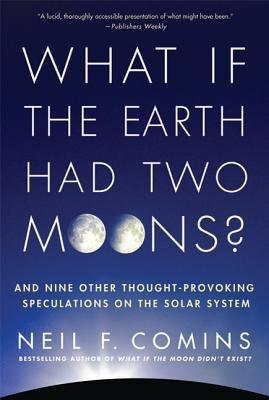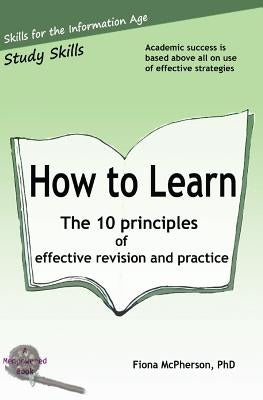Description
We've all heard the expression "You don't have to be a rocket scientist to be able to ...". Well, these Memoirs explain many aspects of what a rocket scientist does have to be able to do. The author, Dr. Mark Salita, has modeled a very wide range of phenomena in rocket chambers, nozzles, and plumes, as well as on the Shuttle launch pad and inside Minuteman ICBM silos........... The purpose of this memoir is to share his multitude of experiences in the rocket industry. It is meant to be entertaining and insightful for rocket colleagues, and for students or young engineers who want to know how one rocket scientist solved the many technical problems assigned to him. Many "lessons learned" are discussed. Recommendations are made about the process of problem solving in general........... Dr. Salita is best known around the world for his modeling of O-ring erosion on Shuttle boosters, which he presented to NASA before the Challenger accident, and after to the Presidential Commission. His subsequent computer model of O-ring deformation and activation was the first of its kind, and was used to explain that the Challenger accident didn't happen simply due to the cold air (as described herein). That model has also been used for other aerospace applications, and by the nuclear power industry for their containment vessels........... He is also well known for his innovative modeling of propellant ignition, slag generation in solid-propellant rocket motors, and vehicle staging. He also created the first model of gas-bag inflator operation, and his original 1985 model of moisture ingestion into gas bag inflators may explain the failure of Takata inflators in 2015. Recently, he has been modeling the Boost-Phase Intercept of enemy ICBMs from Unmanned Aerial Vehicles (UAVs, i.e. "Drones") using high-speed interceptors........... TESTIMONIALS"I have read through this book and I was impressed with your work and your abilities. For what it's worth, I think this book should be on the must-read list of all current as well as budding aerospace engineers and scientists. It's the best. Thanks for what you have done". Dr. Dwight Clark (former Professor of Chemical Engineering at BYU, and Retired Section Supervisor, Thiokol Corporation)..........."Your memoirs are extraordinary. All propulsion technologists can learn from them. All those interested in aerospace or rocket science will enjoy your insights, history, and anecdotes". Dr. Leonard Caveny (retired Director of Science and Technology for the Ballistic Missile Defense Organization (BMDO))...........SAMPLE CONTENTSWhat is a "Rocket Scientist", and what are the fundamentals of solid- and liquid-propellant rockets...........Numerous entertaining short stories, cute incidents, and startling quotes involving math and engineering...........Guidelines for successful engineering analysis...........Tips on how to prepare for job interviews, and the importance of documenting results well...........How to make engineering computer codes User-Friendly...........Near-disaster on first Shuttle flight ... my modeling suggested the fix for future flights...........Booster O-Ring erosion modeling ... presentations to NASA/MSFC and Presidential Commission...........First model of O-Ring deformation/activation ... explaining the Challenger accident...........Criticality of wind-shear during Shuttle launch ... started Columbia accident and ensured Challenger accident...........Dynamics of liquid-metal droplets ... size distributions, collision-coalescence, vaporization...........Modeling slag generation in solid-propellant rockets to explain motor underperformance and failures...........Boost-Phase Intercept of enemy ICBMs using UAVs ("drones") at 60 kft ... Another layer of ICBM defense...........Lecturing and consulting in retirement.
About the Author
Dr. Salita has almost 40 years experience modeling phenomena in and around solid-propellant rockets. He obtained a Bachelor degree in Aeronautical Engineering from Rensselaer Polytechnic Institute (RPI) in 1965, a Master of Science degree in Aeronautics and Astronautics from Penn State University in 1967, and a PhD in Aerospace Engineering from the Guggenheim Labs at New York University in 1971. He worked on the Apollo propulsion systems during summer internships at the NASA Manned Spacecraft Center (now JSC) in 1966 and Langley Research Center in 1967. After working in Gas Turbine research for Pratt & Whitney (1972-1976), he joined Thiokol Corporation as Staff Scientist in Fluid Mechanics (1977-1992). From 1993 to 2008 he was a Senior Scientist at TRW/Northrop Grumman Missile Systems. He has developed the first models for many phenomena, including the operation of gas-bag inflators, O-ring erosion in booster joints, O-ring pressurization and activation, slag accumulation, and mathematical description of the size distribution of aluminum oxide droplets formed from the combustion of aluminized solid propellants. He has chaired JANNAF Workshops in Solid Propellant Ignition (1985), SRM performance (1987), Slag Generation (1994), and Vehicle Staging (2002), and has written numerous papers for AIAA and CPIA. He has been an invited lecturer at AIAA short courses, NASA JPL, NAWC (China Lake), Hill AFB (Ogden, UT), Onera (Paris), the von Karmen Institute (Brussels), the Technion (Haifa), and the Redstone Arsenal (Huntsville). He is the director and clarinetist for the Tempe Wind Quintet, and was still playing vigorous ice hockey at age 71.




















































